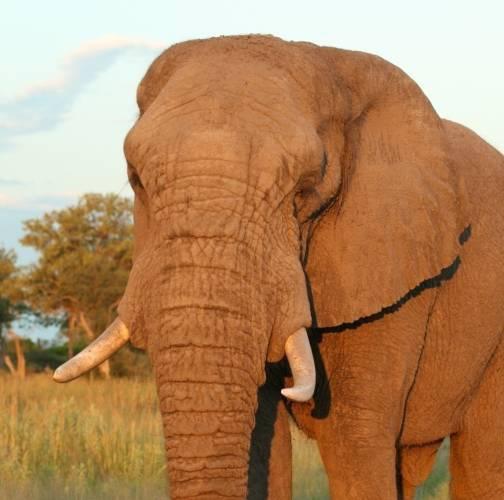Anna Songhurst
Other projects
22 Sep 2008
Human-Elephant Conflict in the Okavango Panhandle, an HEC Hotspot in Africa, Botswana I
6 Feb 2012
Community Based Human-Elephant Conflict Management in the Okavango Delta Panhandle, Botswana
The aim of this project is to build capacity and involve the community in assessing elephant crop damage and in devising future mitigation strategies for Human-Elephant Conflict in the eastern Okavango Panhandle, Botswana.

Botswana faces a different challenge in elephant conservation and management to most other African countries. Due to the success of conservation efforts and a minimal amount of poaching Botswana’s elephant population is growing at an estimated rate of ~6% /yr and consequently their range is increasing. Elephants are unfortunately now perceived to be a problem animal. Many local communities are complaining of crop loss, property damage, fear of walking, and even human deaths. The Government of Botswana is under immense pressure from many of its citizens to do something about this expanding “problem”, and as a result management measures such as wide scale culling are being discussed.
It could be argued that the future of Africa’s largest and most important elephant population is in real jeopardy if these conflicts are not resolved. Luckily, the current Government is in favour of creating a Transfrontier Conservation Area with neighbouring countries to avoid such management measures. However, for this conservation area to become a success, it is essential that the communities living in and adjacent to the area are in favour of the conservation strategy and that problems associated with living close to wildlife are addressed. Solutions to reduce human-elephant conflict are needed.
The Okavango Panhandle, the study area of this project, is an HEC hotspot in Botswana. A more detailed understanding of spatial patterns and environmental predictors of conflict are required in order to devise effective mitigation strategies here. This project aims to train enumerators from the community to collect independent primary data on HEC incidents and record their GPS locations. Independent data collection is important to avoid bias. By involving community participation in the data collection phase of the project, it is hoped that community awareness and responsibility for the HEC situation in the panhandle will be developed.
Data from this project will be combined with the additional data from the overall HEC research project being carried out in the area, and will contribute crucial information to the Government of Botswana about the processes and underlying patterns of HEC in the panhandle. Such information will be useful in designing effective HEC mitigation strategies and alternative land use plans to reduce HEC, which is essential for the success of the Kavango Zambezi Transfrontier Conservation Area. A reduction in HEC and an increase in positive community perception towards the KZTfCA, are essential for the long-term conservation of Botswana’s elephant population and to avoid culling.